
| From Wyoming Tales and Trails This page: Wheatland continued, Laramie Peak |
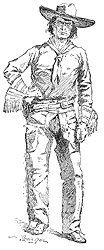 |

| From Wyoming Tales and Trails This page: Wheatland continued, Laramie Peak |
 |
|
|
|
About This Site |
|
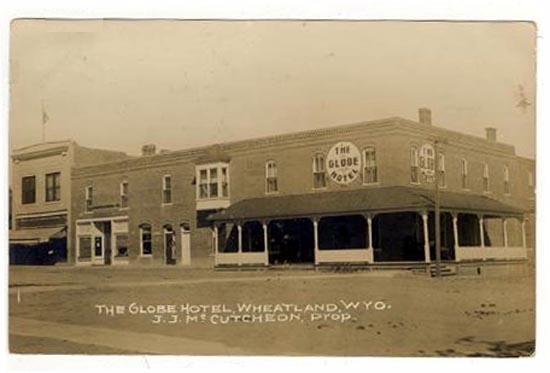 Globe Hotel, intersection of Gilchrist Ave. and 9th Street, 1915. By 1901, the Wyoming Improvement Company had leased additional lands for reservoirs and ditches from the Swan Land and Cattle Co. It developers also organized the Wheatland Industrial Company. In 1888, the Company founded the "Wheatland Colony." Ultimately, the company provided irrigation for 500,000 acres, but did not make money. Gilchrist along with J. A. Johnston from Wheatland, Cheyenne lawyer Gibson Clark, and C. A. Cambell, were able in 1887 to secure the agreement of Elwood Mead to become Territorial Engineer. Mead is, today, regarded to a great extent as the father of irrigation in the State.
 Uva, undated. For a period of time, the Colorado and Southern from Cheyenne reached only as far as Uva. Thus, Uva became a main shipping point for cattle being trailed from Fremont County and was described by George Crufutt in this 1895 guide as the "most importance place" on the railroad In addition to the railroad depot, Uva had a general store operated by George H. Boswell, a second store, a hotel, several saloons, and a mutual improvement association. [Writer's note: Although today, mutual improvement associations are generally associated with the Mormon Church, such groups were part of a world-wide movement with individual societies being sponsored by many types of organizations including labor unions, other churches, or were independent. Thus, as an example, Kalispell, Montana, had a Black women's Mutual Improvement Club. One of the first associations in the United States was sponsored by the Unitarian Church. They were devoted to mutual self education through lectures, entertainments, amateur plays, etc. and were a common part of 19th Century America.]
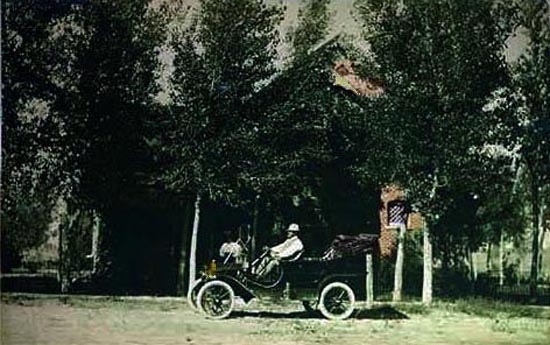 James M. Whitney in his new motorcar, Uva, Wyoming, 1910. Whitney came to Wyoming and worked as a cowboy. By 1890, he was able to purchase his first land for his stockgrowing operation.
 Wheatland School. The school, build in 1903, replaced earlier structures located at Gilchrist and 12th and High and 10th. 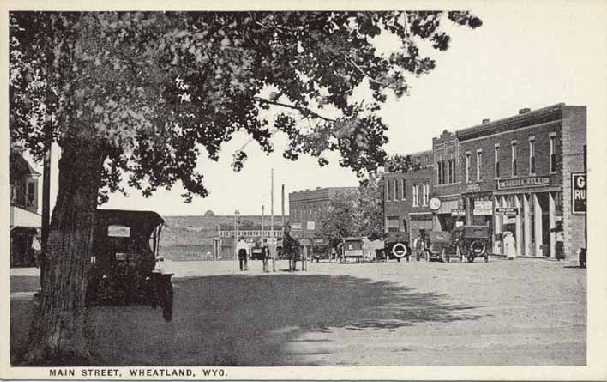 Wheatland, approx. 1915 Note the Golden Rule Store. For discussion of Golden Rule Stores see Kemmerer.
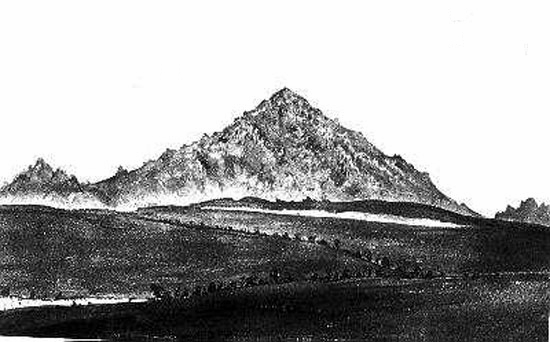 Laramie Peak, sketch by James Wilkins, 1849 To the northwest of Wheatland lies Laramie Peak, one of the important landmarks for early travelers on the Oregon Trail. Crossing Nebraska would take thirty days without much of a change of scenery. Thus, progress was measured along the trail by important landmarks, Courthouse Rock, Chimney Rock, Scotts Bluff, Laramie Peak, Independence Rock, Devil's Gate, and Muddy Gap. Of these, Laramie Peak which could be made out as a puff of haze on the horizon from a point just west of Scotts Bluff, marked the sign that the emigrants were approaching the Black Hills as the Laramie Range was then known. Even then, it might take as much as eight days for a traveler to reach a point on the Platte opposite the peak. Almost uniformly, the diaries of the emigrants note the time they first could sight of its snow topped crest. Mark Twain, as an example, noted in Roughing It: We passed Fort Laramie in the night, and on the seventh morning out we found ourselves in the Black Hills, with Laramie Peak at our elbow (apparently) looming vast and solitary -- a deep, dark, rich indigo blue in hue, so portentously did the old colossus frown under his beetling brows of storm-cloud. He was thirty or forty miles away, in reality, but he only seemed removed a little beyond the low ridge at our right.
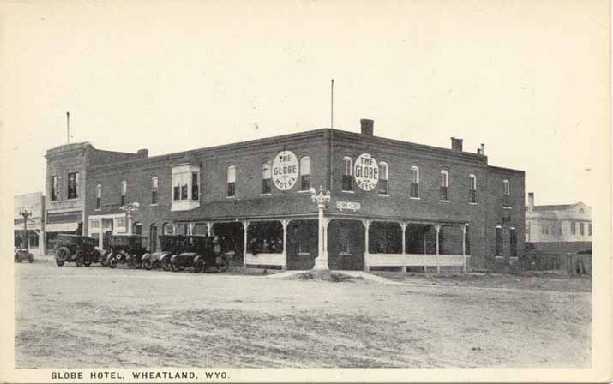 Globe Hotel, Wheatland Wheatland makes much of the proximity of Laramie Peak. In the town are businesses which bear the name of the mountain as well as a small museum with limited hours devoted to the Mountain.  J. T. Miller & Son Store, Wheatland, undated
|